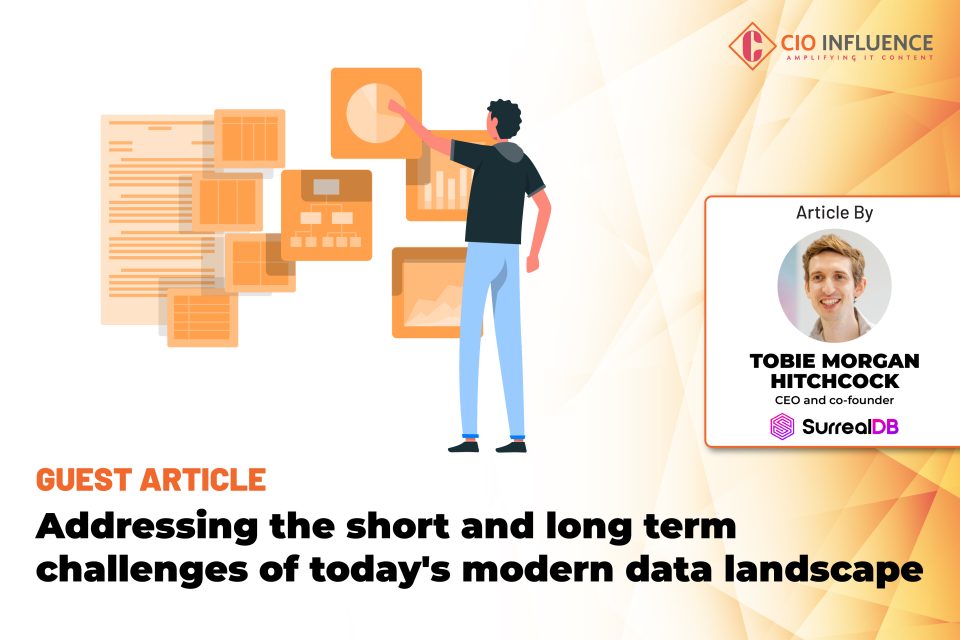The explosion of data created and consumed across the world is eye-catching: by 2025, global data creation is expected to triple the amount from just five years prior. This is incredibly useful from a business perspective, providing numerous benefits ranging from personalization to advanced decision-making, but with it comes certain challenges the enterprise must address.
Also Read: How Understanding Customer Needs Fuels Product Success
In recent years, the increased demand for and complexity of data has caused developers to be overwhelmed by managing multiple different databases. With different data and performance guarantees, as well as varying types of data, developers are required to use numerous platforms that all require different levels of management and with varying levels of complexity. This has unfortunately forced developers to spend hours every week on data management, taking away from valuable time building new applications.
To meet the needs of the modern data landscape, enterprises need a modern data solution that can eliminate the busy work while also scaling alongside the company’s growth.
Databases, databases, and even more databases
As data consumption grows, the amount of different database types that are needed to manage this data has grown in parallel. The amount of data sources and the intricacies of each require unique databases that were built specifically for that source. For example, traditional relational databases were designed for structured data that can be organized into tables. However, most of the data we generate today is not always in such structured formats as the variety, velocity and volume continues to grow. Alongside relational databases, others have emerged including document, graph, time-series, and vector databases, to name a few.
Meanwhile, the task of managing all these different databases, with unique requirements, programming languages, and differing types of data storage, has fallen to – you guessed it – the developers. The average developer today works with, manages, or builds applications using three to four databases, which is time-consuming and incredibly costly as development time and application complexity is increased by, in some cases, up to 75%.
Developers aren’t meant to be working on infrastructure management for a significant part of the week – they are creative problem-solvers who build applications that bring tangible benefits to the organization. Enterprises who realize the pendulum is swinging back towards simplifying database management and infrastructure complexity will be able to not only save in the near-term on costs, but as it scales with their business over time as well.
Short-term or long-term benefits – why choose?
It’s a delicate balancing act enterprises face between simplifying data management while being up to date with the requirements of modern applications. The strongest solution is a purpose-built solution for multi-model types of databases, as opposed to bolting on upgrades to an old database platform.
With a multi-model data platform, organizations can consolidate their databases while still maintaining the different requirements of each. This helps developers reduce the amount of time spent on managing databases to focus on building applications in real time, which immediately begins saving on costs in the short term. Another feature of modern multi-model platforms that can produce rapid benefits would be a familiar programming language that a****** developers understand, such as a SQL-like query language. This helps developers from any database background to understand a multi-model platform right away.
Also Read: An Evolutionary Approach to Artificial Intelligence
But what about the long-term benefits?
As cloud computing adoption grows in the business world, the separation of storage and compute provided by multi-model platforms is a huge advantage for future growth. As the business becomes more complex and grows in different directions, this capability means the platform can scale independently without requiring additional costs or add-ons in the future.
These solutions are designed to improve the data management process so developers can focus on the applications, not the infrastructure. However, it’s important to closely examine the data needs of your business and how the unique features of each platform fit these needs both now and in the future.
At the end of the day, the challenges of the modern data landscape were inevitable as data became more robust. However, that doesn’t mean they have to become the norm. As businesses make the shift back to simplifying data management to protect their most valuable asset, there are several considerations to keep in mind.
Does this solution improve the data management process in both the short-term and the long-term? Does it help developers spend less time on infrastructure and more time building applications that help the business and its customers? These are just a few of the questions companies should be asking themselves – because while data reigns supreme, your employees need the freedom to create as well.
[To share your insights with us as part of editorial or sponsored content, please write to psen@itechseries.com]


